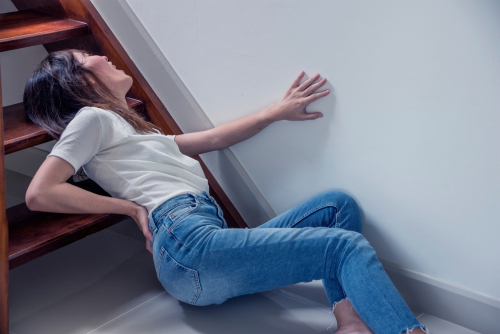According to the Centers for Disease Control and Prevention, falling accidents affect millions of people every year. They disproportionately affect the elderly and lead to tens of billions in damages and medical costs. Many of these falls, however, are not categorized as slip and fall accidents. Slip and fall accidents occur when slippery surfaces cause an individual to lose balance and strike the ground. Multiple parties may be involved in such an accident, which is why slip and fall cases are hard to win.
Causes of Slip and Fall Accidents
There are many ways a slip and fall accident can occur. In many cases, the carelessness or negligence of a property owner or services provider plays a part in causing or contributing to the accident. For example, a lack of signage that cautions passers-by about wet spots, objects in the middle of a walkway, or falling objects can lead to a slip and fall injury. A failure to maintain safe sidewalks and roadways and stable working surfaces and provide safety features such as handrails can also lead to an accident.
Providing safety signage is usually the responsibility of a property owner or maintenance crew. However, even if there is adequate signage and if a property owner does take steps to prevent an accident, visitors, patrons, and employees on a property can still suffer a slip and fall accident and serious injury. For example, changes in floor traction—which is common when surfaces change from, for example, cement or tile to carpet or hardwood—can be difficult to adjust to even if signs and warnings are provided.
Proving Guilt in a Slip and Fall Accident
The challenge for victims is in proving that the negligence or carelessness of a property owner was directly linked to an accident. Owners of businesses, commercial property, and public spaces owe everyone that has a right to be on their premises a duty of care. This means they must take reasonable measures to ensure the safety and wellbeing of their guests, employees, and patrons. Failing this, the property owner may be liable for damages that result in a slip and fall accident on those premises.
Winning a slip and fall case will require you to:
- Prove ownership or occupancy of the property.
- Prove responsibility for safe environs.
- Prove that a slip and fall caused bodily harm.
- Quantify the harm that was caused.
Proving ownership of a specific property is generally not difficult. Connecting an accident to bodily harm can also be straightforward. Injuries can be quantified using medical bills and lost income expense sheets. The reason slip and fall cases are hard to win is because it is not always easy to determine responsibility for safe groundskeeping.
An owner, occupier, or maintenance crew may be responsible. Also, proving negligence is even harder. You must demonstrate that the responsible party did not do enough to keep a property safe.
Most slip and fall accidents involve first-hand accounts of the incident, and it comes down to a “my word against yours” scenario. In some cases, you may be able to obtain surveillance footage or video showing how, where, and why a slip and fall accident occurred. However, winning a slip and fall damages claim hinges on the responsible party having had adequate notice of a hazard and not having taken remedial actions to remove the hazard.
In many cases, it is difficult to prove that a property owner or another responsible party had notice of onsite hazards, in which case he or she may be absolved of injuries and damages that resulted from those hazards.
Also, many state and federal laws only require occasional property inspections. If those are completed on time, the party you deem to be at fault for your accident may be able to prove that they were not, in fact, negligent of their duty to ensure that their premises were safe.
Finally, many slip and fall accidents are the result of factors outside of the control of a property owner. Inclement weather, poor visibility, victim health issues, and the actions of a third party not directly related to the property owner or the victim can also cause or contribute to an accident, making it much harder to win a slip and fall case.
We Are Here to Assist You
Slip and fall cases can lead to significant bodily injuries and can be very complex. They are so serious that the Department of Health and Human Services even provides slip and fall prevention guidelines to the public that are industry-specific.
It is our job at Gacovino & Lake to obtain the evidence needed to support your case and to help you in your claim for damages that resulted from a slip and fall accident. If you or someone you know was involved in a slip and fall accident, please call our offices at (631) 600-0000 for a free, confidential, and no-obligation case evaluation.
